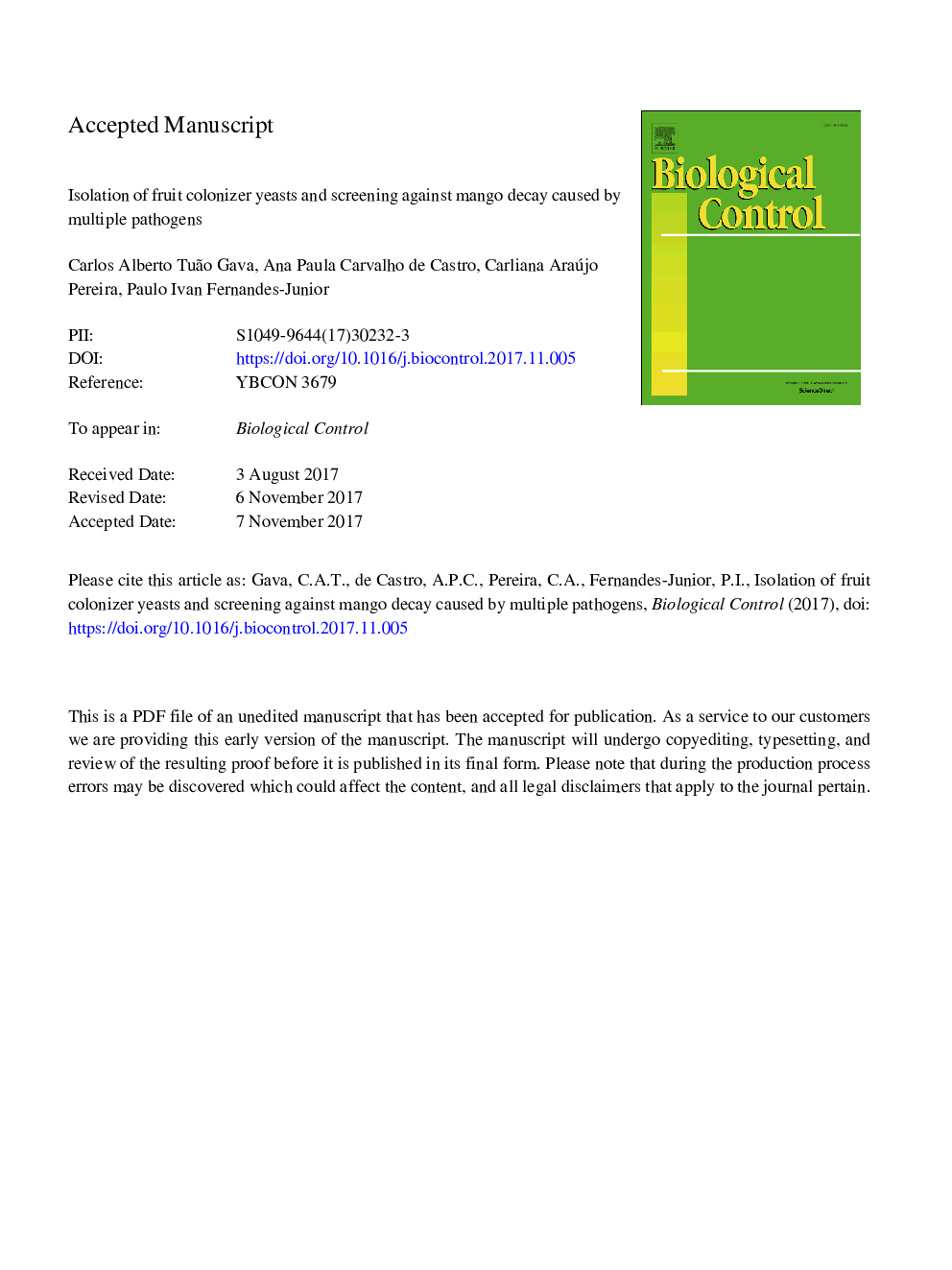| Article ID | Journal | Published Year | Pages | File Type |
|---|---|---|---|---|
| 8877765 | Biological Control | 2018 | 37 Pages |
Abstract
Most studies selecting antagonistic microorganisms have focused on one pathosystem and then extended to others, but this approach was not a viable alternative for mango decay which is caused by a pool of pathogens in the tropics. In this study, 182 yeast isolates were isolated from ripe fruits of native wild plant species and other fruit crops from the Brazilian semi-arid region and selected against four prevalent agents of mango decay in tropical regions. The largest number of isolates was obtained from table and wine-grapes, followed by the native Spondias tuberosa. In dual culture assays, 8.8% of the yeast isolates showed growth inhibition halos of at least one of the pathogens. However, only six yeasts reduced the development of lesions in vivo to less than 50% to all the pathogens. Yeast/pathogens co-inoculation in healthy mango fruits in semi-commercial conditions showed that S. cerevisiae ESA45, Saccharomyces sp. ESA47 and Pichia kudriavzevii CMIAT171 had the larger spectrum of control efficiency, significantly reducing rot incidence and severity of all pathogens. The isolates also showed a variable tolerance to abiotic stress and biomass production. These results show the potential of these epiphytic yeasts as biocontrol agents of multiple pathogens infection in mango fruits.
Related Topics
Life Sciences
Agricultural and Biological Sciences
Agronomy and Crop Science
Authors
Carlos Alberto Tuão Gava, Ana Paula Carvalho de Castro, Carliana Araújo Pereira, Paulo Ivan Fernandes-Júnior,
